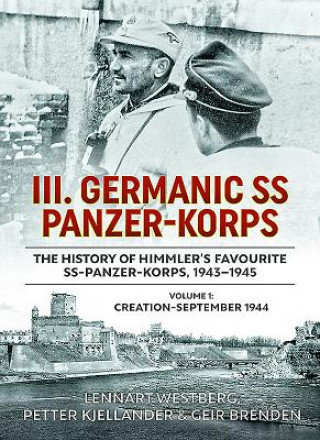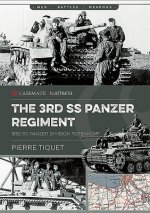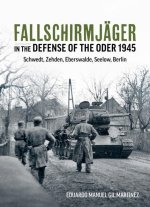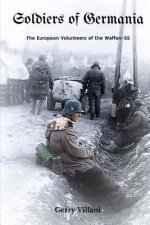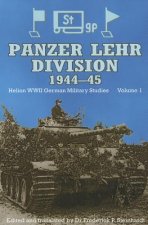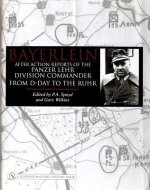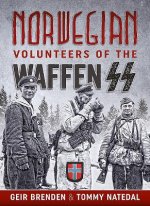
Livrare
Consilier de cumpărături





Nu se pretează? Nu contează! La noi puteți returna bunurile în 30 de zile
 Voucher cadou
orice valoare
Voucher cadou
orice valoare
Cu un voucher cadou nu veți da greș. În schimbul voucherului, destinatarul își poate alege orice din oferta noastră.
III Germanic Ss Panzer-Korps
 engleză
engleză
 200 b
200 b
30 de zile pentru retur bunuri
Ar putea de asemenea, să te intereseze


"These two photographic volumes depict Himmler's favourite unit in the Waffen-SS: the III 'Germanic' SS Panzerkorps, for it fulfilled Himmler's long-time political plans of recruiting 'Germanic' volunteers for the creation of a greater Germanic Reich in the future. As such, it consisted in part of SS volunteers from western and northern European countries. Although largely forgotten today, this elite SS unit fought on a variety of battlefields ranging from Croatia and Ingermanland's snow-covered forests near Leningrad to the historic Estonian city of Narva, where it defended the Baltic countries of Estonia and Latvia against the Red Army in 1944-45. The remnants of the Panzerkorps ended up in both the hopeless defence of Pomerania and the final apocalypse at the battle for Brandenburg and Berlin in April-May 1945, when the Third Reich went down in a storm of fire and steel. Volume 1 covers the period from the creation of the III SS Panzerkorps in the summer of 1943 until the German evacuation of Estonia in September 1944. The coverage includes the unit's involvement in anti-partisan operations in Croatia (September-December 1943), the fighting at Oranienbaum-Leningrad and the battle for Ingria (January-February 1944); the defence of the Narva bridgehead and the battles for Dorpat and the Blue Hills, finishing with the German evacuation of Estonia (February-September 1944). On the Eastern front, a motley mix of nationalities and individuals fought under the Swastika and subsequently it was volunteers from various countries who served in the III 'Germanic' SS Panzerkorps, including Norwegians, Danes, Swedes, Swiss, Dutch, Flemings, Walloons, Estonians, Germans and ethnic Germans from Rumania. Even a handful of renegade British volunteers turned up in this unit during the final weeks of WWII. All of these SS soldiers had widely varying reasons for joining the Waffen-SS. These volumes not only include well over 1,000 partly unpublished photographs of the III SS Panzerkorps during 1943-45, but also a large number of previously unpublished personal battle descriptions by surviving officers and soldiers of this corps from the authors' archives of personal correspondence. The photographs are also accompanied by interesting unit histories, biographies, commentaries on weapons and vehicles, as well as analyses of battlefield tactics. These volumes also destroy the myth that the Waffen-SS was purely a military phenomenon. The Waffen-SS was, and remained, in the world and in the long-term planning of Hitler, Himmler and the SS, primarily a political-ideological institution. The multinational Waffen-SS and its esprit de corps must be seen within the context of the European fascist movements of the time and of the polarization between fascism and communism during the years between the First and Second World War. This is especially true for the III 'Germanic' SS Panzerkorps as a future cadre providing SS functionaries for the creation and maintenance of a greater Germanic Reich in the West and the colonization of Lebensraum in the East. SS propaganda deliberately associated the character of the III 'Germanic' SS Panzerkorps with the medieval Teutonic Order in the East as an historic continuity. The dream of a Germanic empire and the Nazi war of extermination against Slavs and Jews were two sides of the same coin. Despite serious flaws during the hasty creation of the III 'Germanic' SS Panzerkorps in 1943, this unit achieved a remarkably successful military performance against a numerically superior opponent, the Red Army. The corps inflicted severe losses on Soviet units during all engagements. However, the losses of the III SS Panzerkorps in manpower and equipment were also extremely high. The personal battle descriptions included in the volumes provide a most powerful witness to the 'slaughterhouse' character of the Eastern Front in 1944-45."
Informații despre carte
 engleză
engleză




 Cum să cumpăr
Cum să cumpăr















